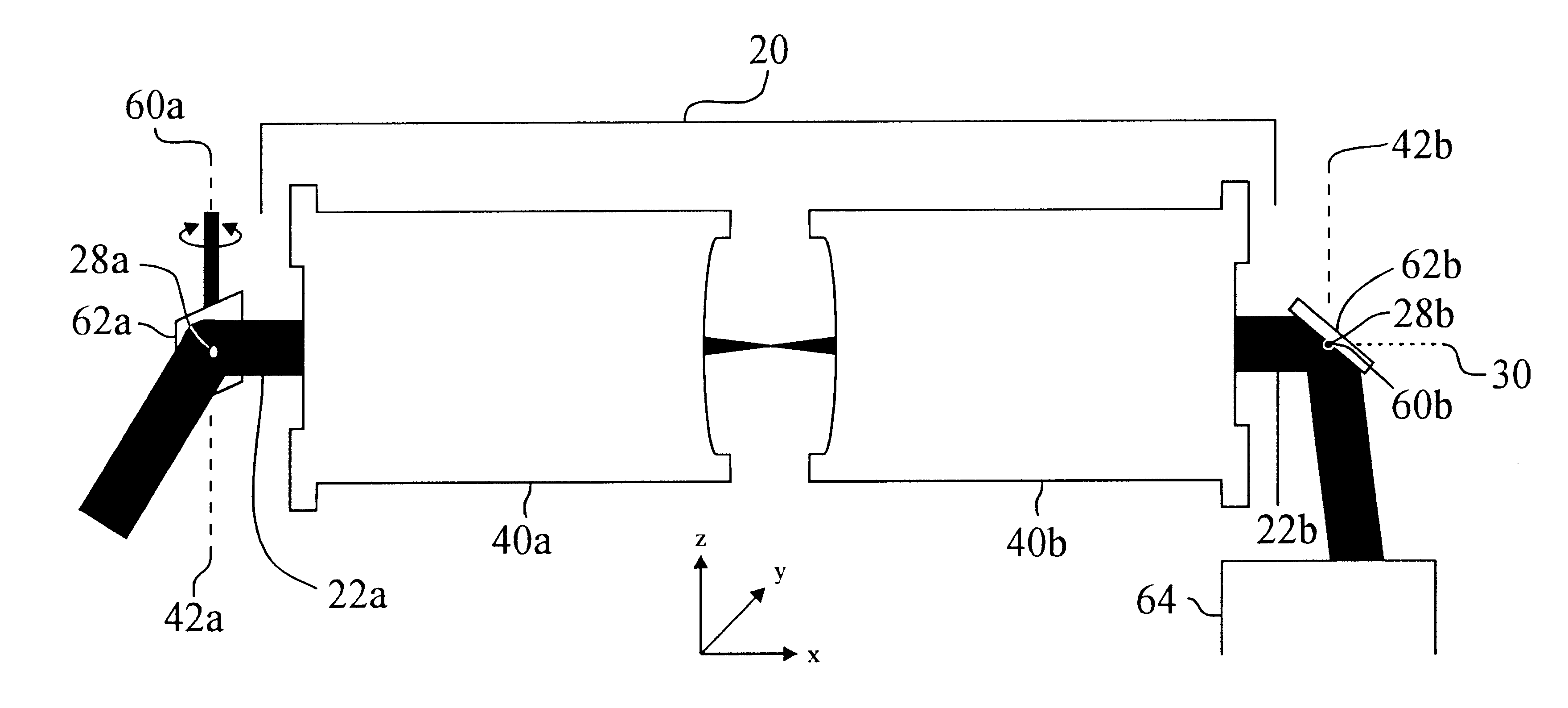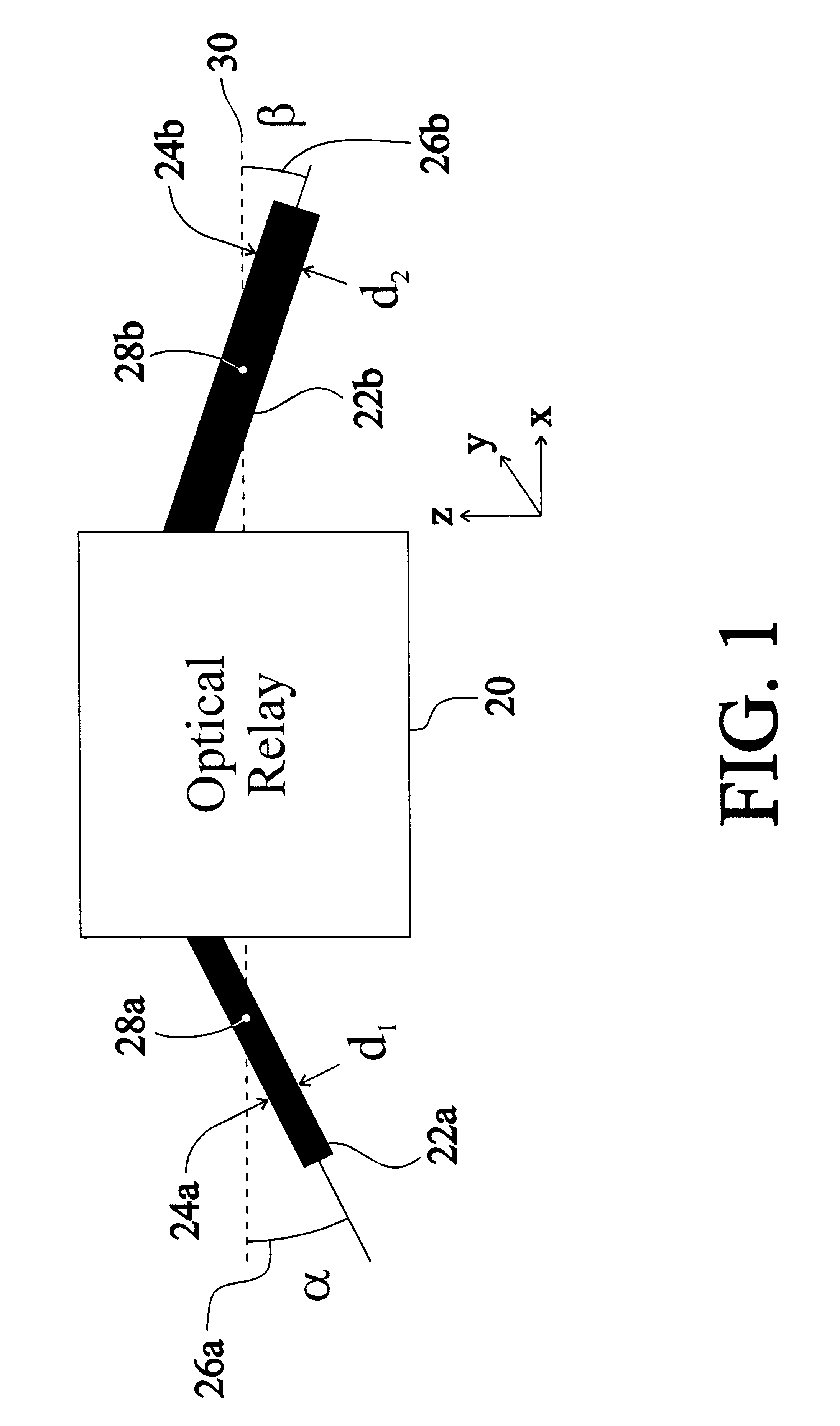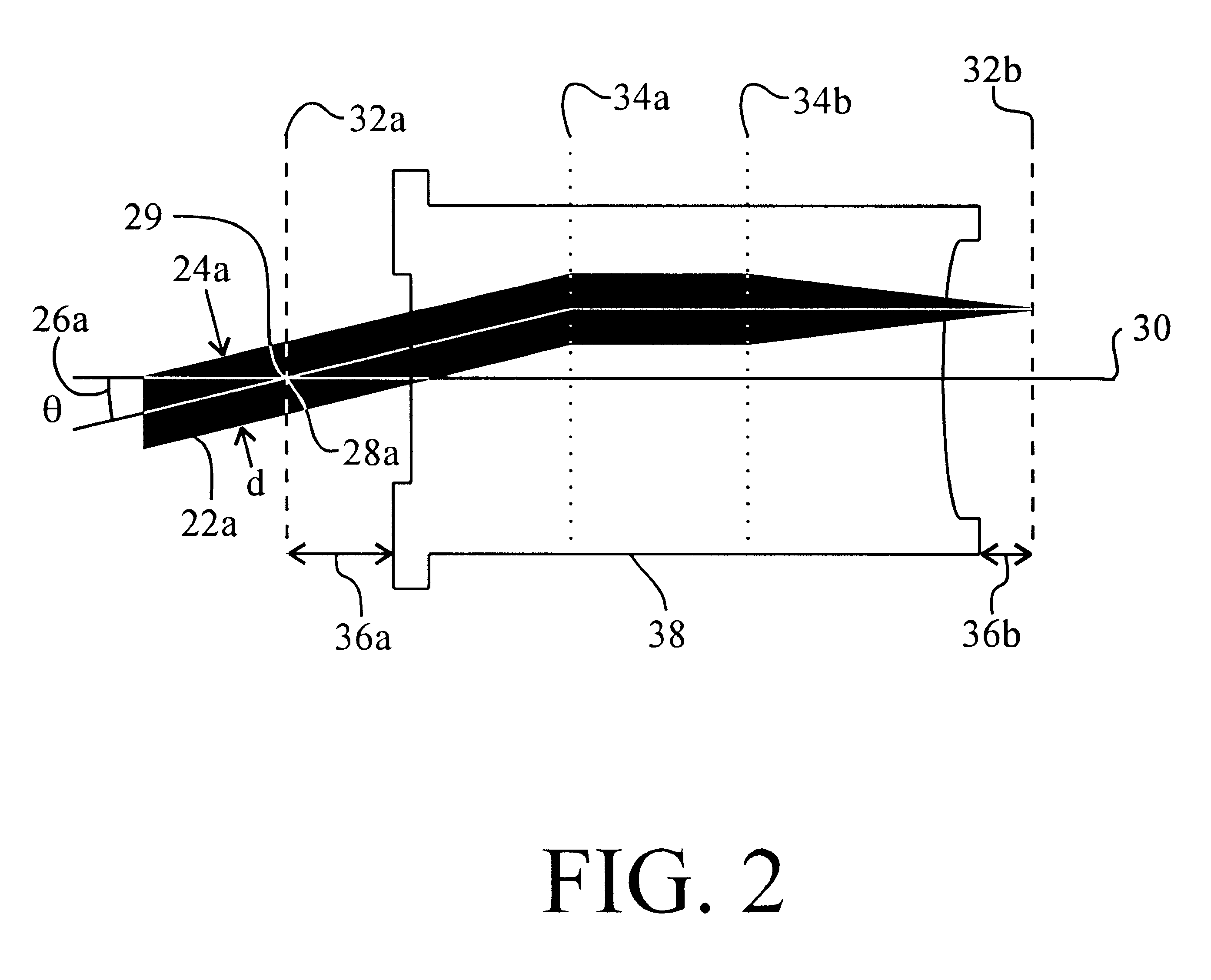Inexpensive, high quality scanning system
a scanning system and high-quality technology, applied in the field of scanning beam imaging optics, can solve the problems of large imaging errors, difficult to manufacture with high tolerances without increasing costs significantly, and apochromatic telescopes generally imply a high cost, etc., and achieve low design cost, low cost, and high quality.
- Summary
- Abstract
- Description
- Claims
- Application Information
AI Technical Summary
Benefits of technology
Problems solved by technology
Method used
Image
Examples
Embodiment Construction
The present invention consists of a pair of eyepieces arranged in an afocal assembly. This assembly acts as a high quality, inexpensive, and compact optical relay for use primarily in scanning beam imaging instrumentation. The optical quality is such that it can also be used in confocal scanning beam imaging systems.
FIG. 1 shows a generic or generalized optical relay 20. The optical relay can consist of any combination of lenses, mirrors, diffractive optics, etc. A collimated beam of light 22a with beam diameter 24a equal to d.sub.1 enters the optical relay. The collimated entrance beam 22a enters the optical relay at an angle 26a equal to .alpha. with respect to the optic axis 30. The entrance beam pivots about the entrance pivot point 28a. The purpose of the optical relay is to accept a collimated beam pivoting about a fixed point and relay this motion such that a collimated exit beam 22b (not necessarily the same beam diameter or scan angle) with diameter d.sub.2 24b and scan ang...
PUM
 Login to View More
Login to View More Abstract
Description
Claims
Application Information
 Login to View More
Login to View More - R&D
- Intellectual Property
- Life Sciences
- Materials
- Tech Scout
- Unparalleled Data Quality
- Higher Quality Content
- 60% Fewer Hallucinations
Browse by: Latest US Patents, China's latest patents, Technical Efficacy Thesaurus, Application Domain, Technology Topic, Popular Technical Reports.
© 2025 PatSnap. All rights reserved.Legal|Privacy policy|Modern Slavery Act Transparency Statement|Sitemap|About US| Contact US: help@patsnap.com



